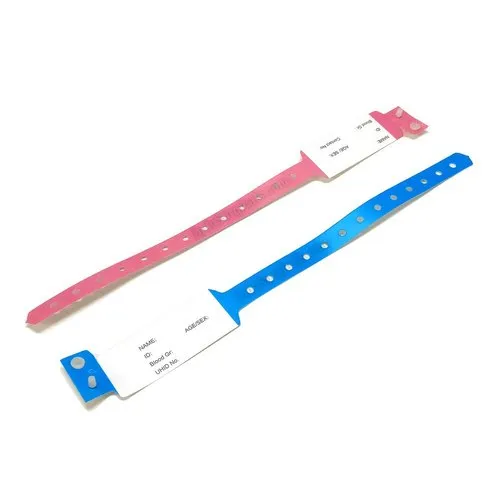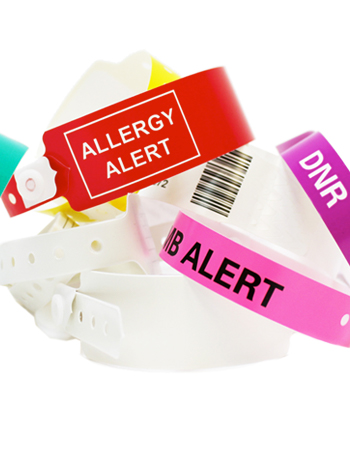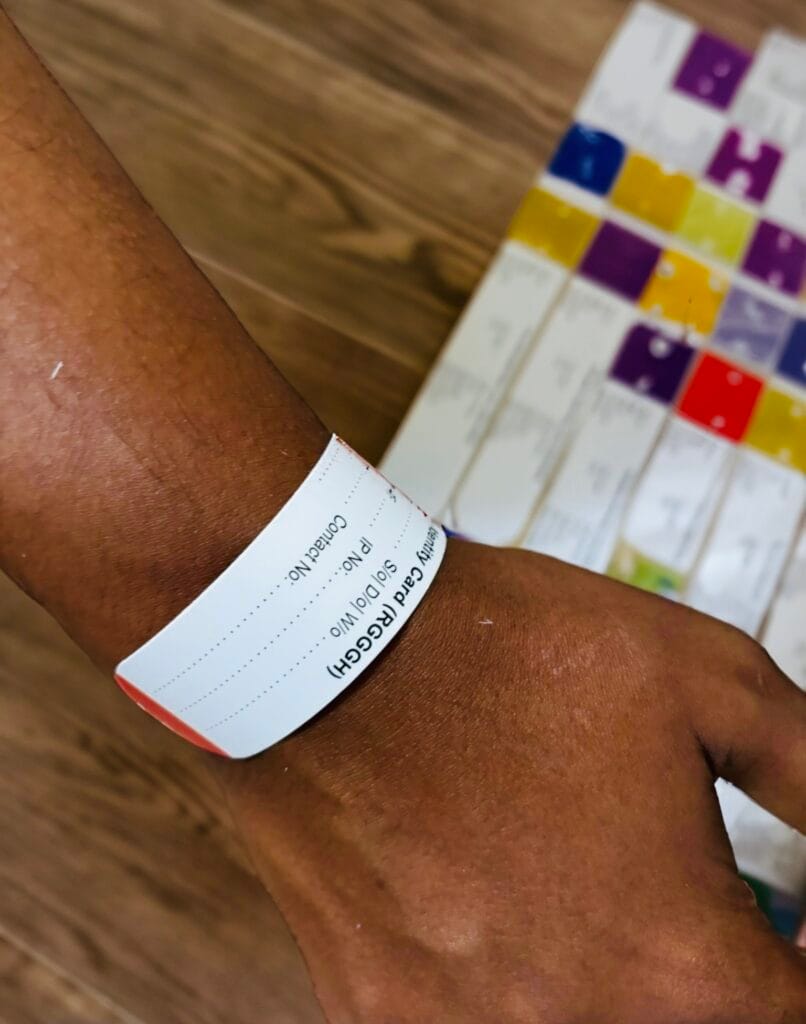Improve Patient Treatment with the Reliability of a Patient Identification Band
Improve Patient Treatment with the Reliability of a Patient Identification Band
Blog Article
Why Patient Identification Bands Are Vital for Every Healthcare Facility
In the facility landscape of medical care, individual recognition bands offer as a foundational component in protecting individual safety and security and minimizing clinical errors - Patient Identification Band. Exploring this question discloses a deeper understanding of individual safety and security and quality care.
Stopping Medical Errors
In the world of healthcare, protecting against medical errors is paramount to making sure patient safety and security and top quality of care. One of the most important consider alleviating such errors is the exact identification of individuals. Misidentification can lead to inappropriate treatments, medication errors, and also medical blunders, every one of which can have terrible repercussions for clients and doctor alike.
Patient recognition bands function as an essential device in this precautionary strategy. These bands usually contain crucial information, such as the client's name, date of birth, and unique identification number, permitting medical care professionals to validate the individual's identification quickly and accurately prior to carrying out any kind of care. Making sure that these bands are appropriately applied and continually used across all medical care setups is essential.
Furthermore, the implementation of digital wellness documents (EHR) can boost the efficiency of patient recognition bands by incorporating them with digital systems that flag potential discrepancies. Routine training and adherence to methods pertaining to making use of client recognition bands can dramatically lower the likelihood of errors. In summary, durable patient identification techniques are necessary for guarding and decreasing clinical errors individual well-being within health care settings.
Enhancing Individual Safety
Client safety and security is a diverse principle that encompasses different approaches and techniques developed to safeguard individuals from harm during their medical care experience. One vital part in improving client security is the application of person identification bands. These bands work as a vital device for guaranteeing that medical care service providers can precisely recognize people, thus reducing the risk of misidentification.
The visibility of person identification bands substantially reduces the chances of carrying out inaccurate medications, conducting unintended procedures, or stopping working to recognize allergies. By affixing an one-of-a-kind identifier to every client, medical care centers produce a trusted system that fosters responsibility and caution among clinical staff. This positive strategy not just enhances the safety of individuals but likewise instills a sense of trust in the medical care system.
Additionally, client recognition bands contribute to a standardized protocol that can be quickly incorporated right into electronic wellness documents. Patient Identification Band. This combination makes certain that crucial patient details is readily obtainable, additional strengthening precaution. Eventually, the effective use identification bands is an important method that underpins a society of safety, intending to secure patients and improve total medical care outcomes
Improving Interaction
Reliable communication is important in the health care setup, as it directly impacts client safety and care top quality. Patient recognition bands serve as a critical device for improving communication among health care providers. By plainly displaying vital client info such as name, date of birth, and clinical document number, these bands promote exact identification, lowering the risk of mistakes in therapy and medicine management.
In addition, patient recognition bands promote a society of accountability and confirmation within healthcare groups. When all team member are outfitted with immediate accessibility to trusted patient identification, the probability of miscommunication diminishes considerably. Throughout handoffs between shifts or interdisciplinary consultations, the visibility of identification bands ensures that everyone involved is on the same page relating to patient identity and medical history, consequently decreasing misunderstandings.
Furthermore, these bands can integrate with digital health documents (EHR), enabling smooth communication of person info across different platforms. This connectivity not just improves the effectiveness of information sharing however likewise supports a much more coordinated strategy to person care. Inevitably, the adoption of individual recognition bands is essential for enhancing interaction, therefore adding to much better health outcomes and guaranteeing that clients obtain the highest possible requirement of care.

Streamlining Operations
The implementation of individual identification bands considerably contributes to enhancing operations within health care environments. By supplying instant and clear recognition of people, these bands reduce the moment healthcare specialists spend verifying person information. This performance decreases the possibility for mistakes, allowing personnel to concentrate on direct individual treatment instead of management tasks.
With standardized identification procedures, health care teams can swiftly access crucial person data, consisting of case history, allergies, and treatment plans. This fast gain access to improves decision-making and permits prompt interventions, inevitably boosting client outcomes. Additionally, the usage of identification bands facilitates far better coordination among multidisciplinary teams, making certain that all members have the proper information at their fingertips.

Furthermore, my website person recognition bands can be incorporated with digital health and wellness document (EHR) systems, better optimizing operations. By scanning a band, doctor can promptly share and upgrade info, thus minimizing redundancy and enhancing documentation efforts. This assimilation aids keep a continual circulation of information, which is crucial in vibrant medical care setups.
Ensuring Regulatory Compliance
In today's health care landscape, guaranteeing governing conformity is vital for maintaining client safety and security and organizational honesty. Individual identification bands play an essential duty in conference numerous governing criteria, such as those established forth by the Joint Compensation and the Centers for Medicare & Medicaid Services (CMS) These organizations emphasize the need of exact patient identification to lessen medical mistakes and boost the quality of treatment.

Implementing standardized individual identification bands helps health care facilities follow policies that need exact individual recognition at every stage of treatment. This consists of medicine management, surgeries, and blood transfusions. Non-compliance can lead to serious repercussions, consisting of fines, loss of certification, and, most importantly, endangering person safety and security.
Moreover, the usage of technology, such as barcoding and RFID systems integrated with client recognition bands, can further enhance conformity efforts by ensuring that the best individual receives the best treatment at the correct time. By focusing on the application of durable client identification systems, healthcare facilities not only adhere to governing criteria yet likewise cultivate a society address of safety and liability, eventually enhancing client results and rely on the health care system.

Conclusion
In final thought, person identification bands serve as a fundamental part in health care facilities, considerably adding to the avoidance of clinical errors and the improvement of client safety. Eventually, the implementation of individual identification bands is necessary for fostering a safer medical care setting and boosting general patient outcomes.
In the facility landscape of health care, person identification bands offer as a foundational element in guarding client safety and security and lessening medical errors. These bands normally include important information, such as the client's name, date of birth, and special identification number, allowing health care professionals to confirm the individual's identity quickly and properly prior to carrying out any type of care.Applying standardized individual recognition bands helps healthcare centers abide with guidelines that call for exact client identification at every phase of treatment.In conclusion, person identification important source bands serve as a basic component in medical care facilities, significantly contributing to the prevention of clinical mistakes and the enhancement of client safety - Patient Identification Band. Eventually, the application of individual identification bands is important for fostering a more secure medical care setting and enhancing general person results
Report this page